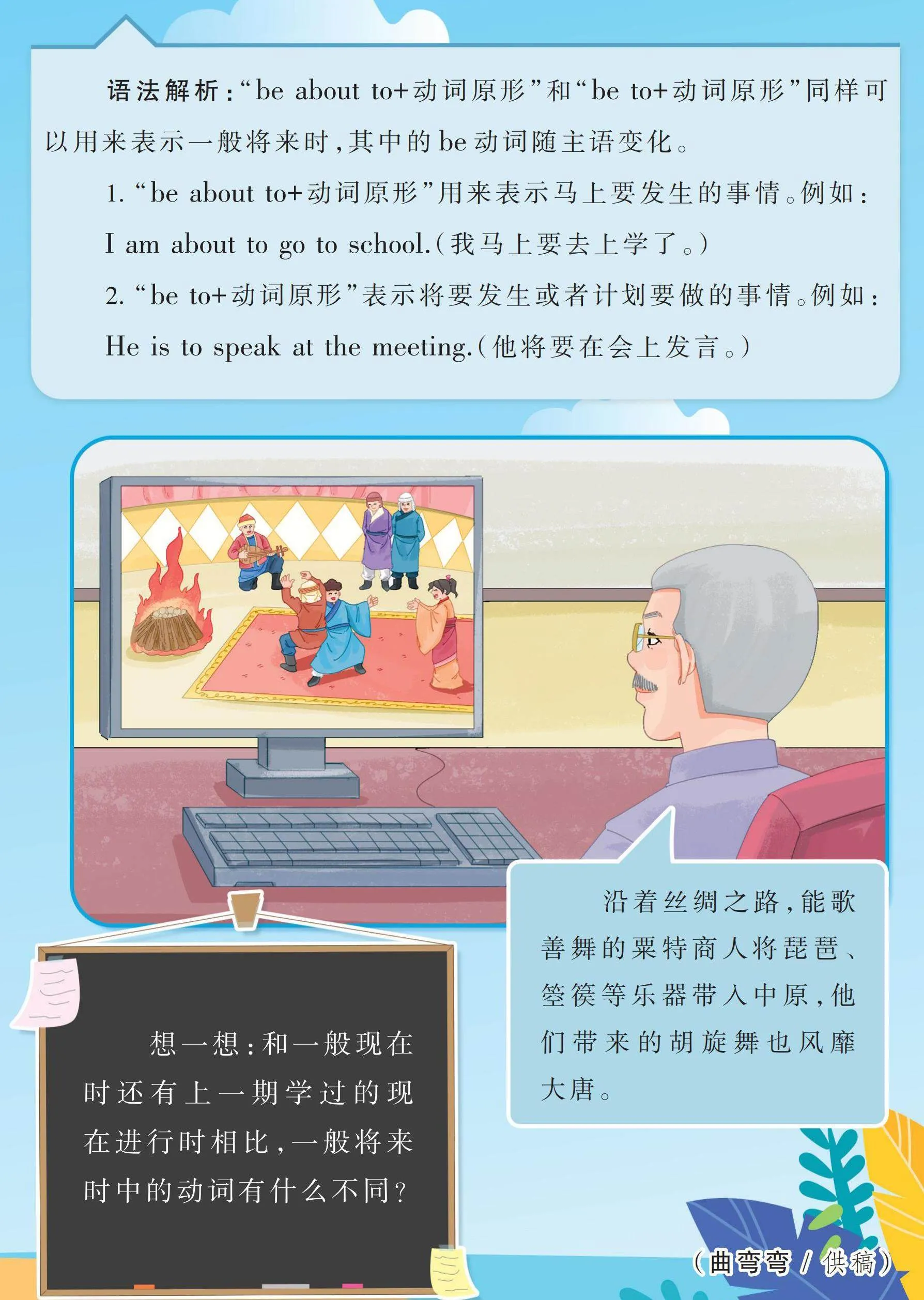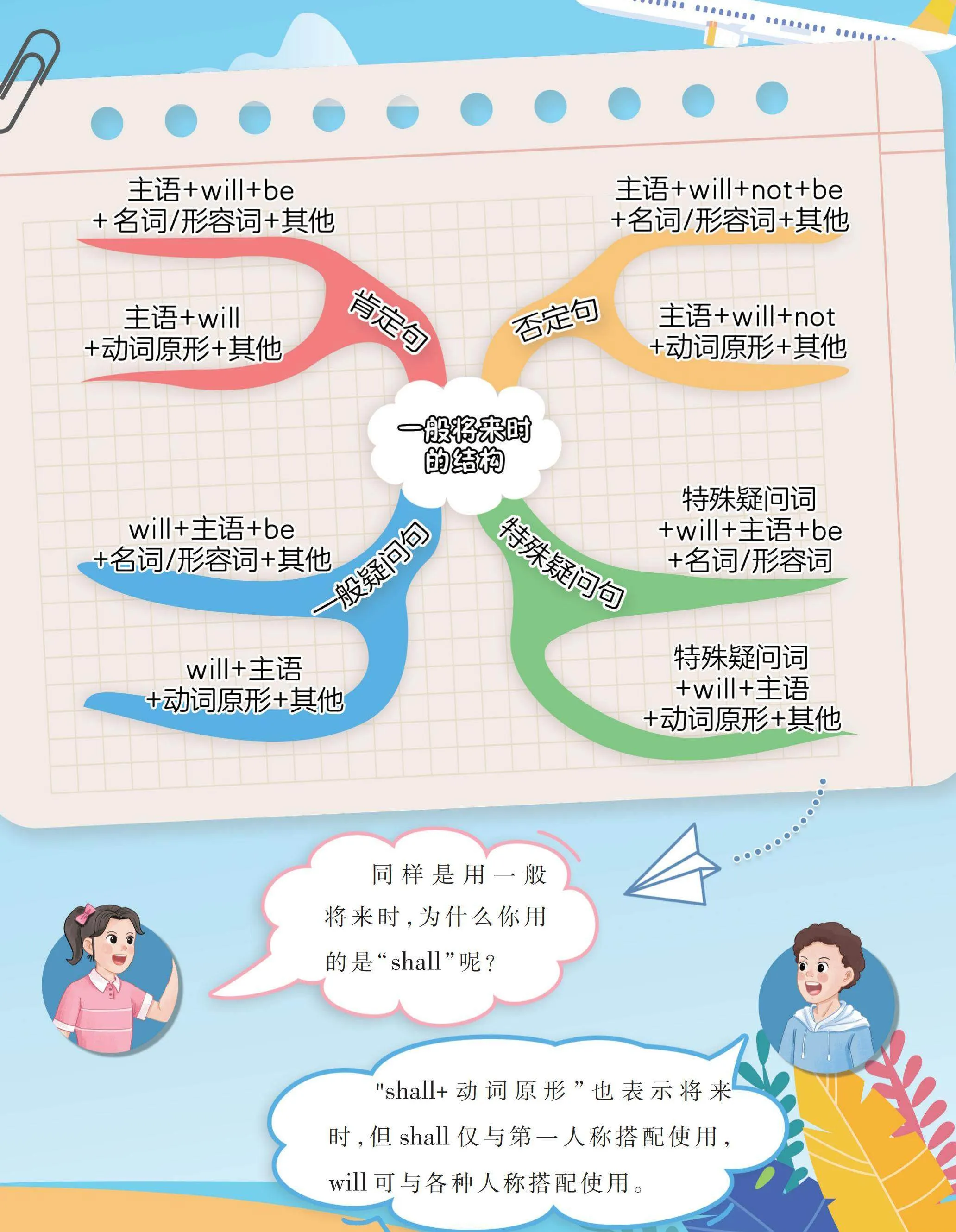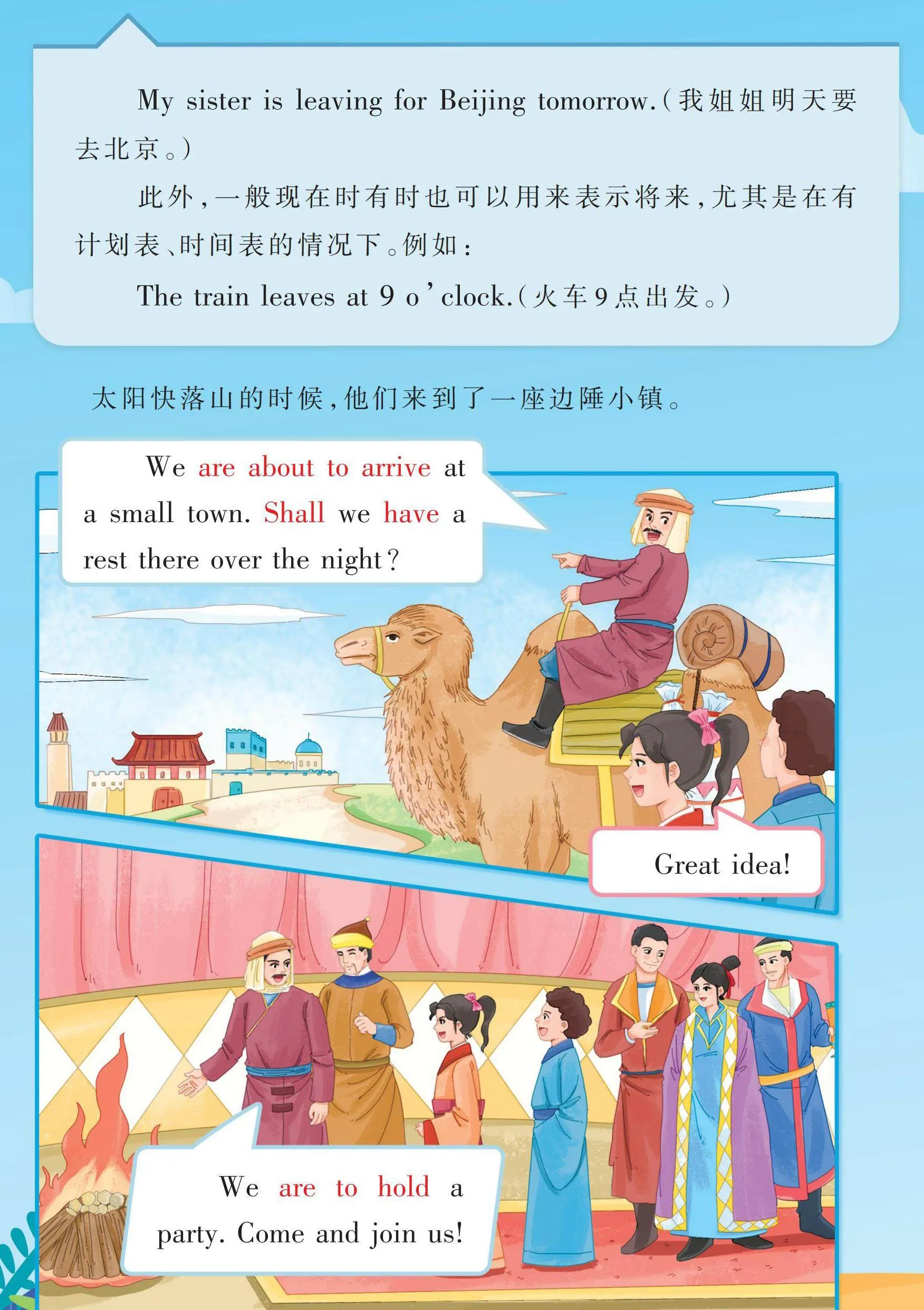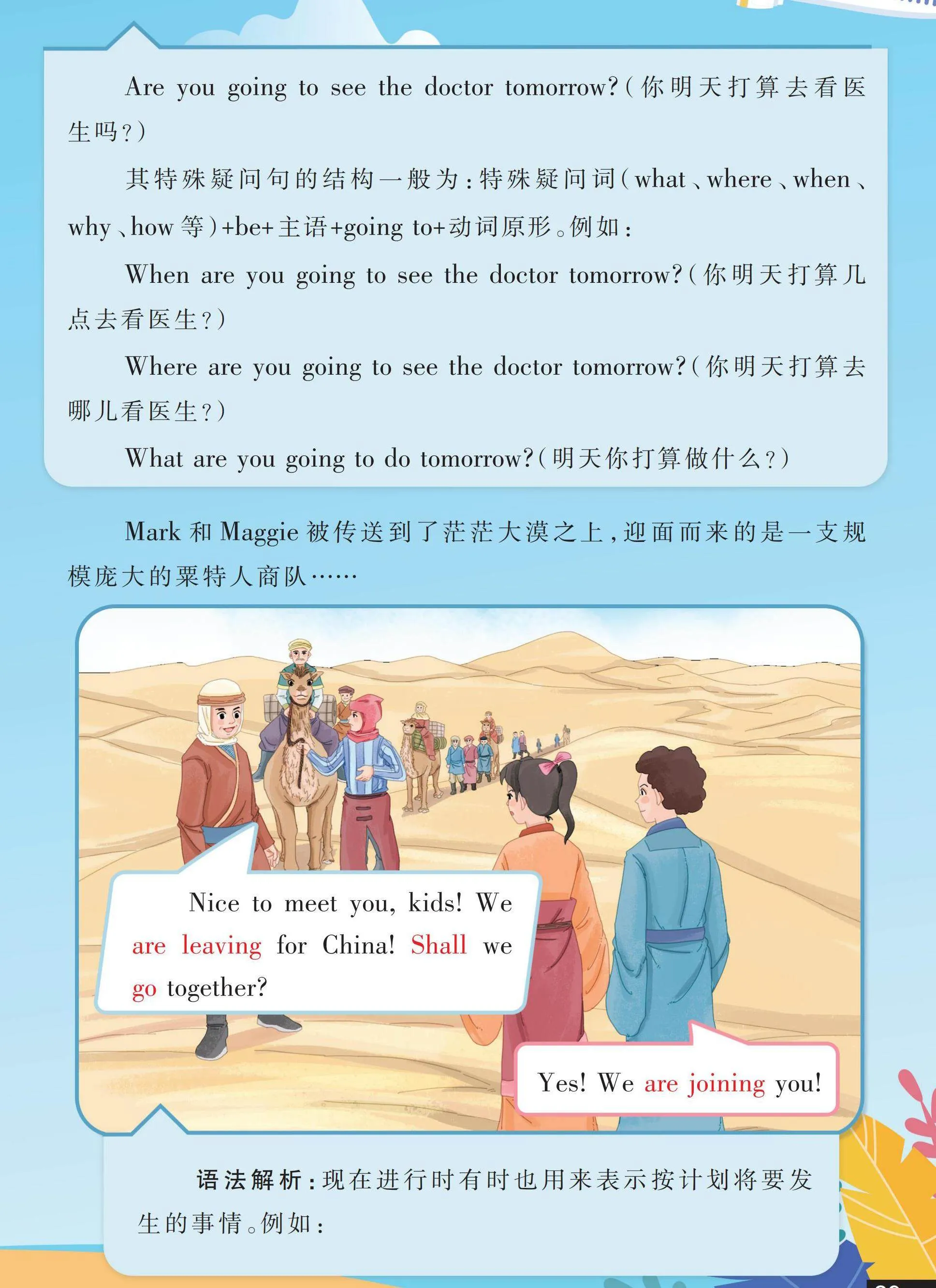Mark与Maggie的奇幻之旅(6):一般将来时






“孩子们,任务完成得很棒哦!不要惊讶,其实我就是森林里的老人,我是奇幻历史世界的守护者,也是这座图书馆的管理员。你们的旅程可才刚刚开始……”
语法解析:一般将来时可以用来表示将来会进行的动作或发生的事,也表示倾向、习惯、必然发生的事。一般将来时常和一些标志词(时间状语)一起出现,常见的有:tomorrow(明天)、soon(很快)、at once(立刻)、in+一段时间 (多久之后) 、next time/Wednesday/week/month/year/term(下次/下周三/下周/下个月/明年/下学期)。
2. 一般将来时的构成有很多种,这里出现的是第一种:will/shall+动词原形,在主语人称代词后面可以缩写为“’ll”。will可用于第一、第二与第三人称,而shall只能用于第一人称(I/we)。如:
I will/shall go home late tomorrow.(我明天会晚回家。)
She’ll graduate from school this summer.(她将在这个夏天毕业。)
3. will的否定形式为will not,缩写为won’t;shall的否定形式为shall not,缩写是shan’t。例如:
I will not/won’t be late tomorrow.(我明天不会迟到。)
I shall not/shan’t be able to come to your party next week.(我下周不能去参加你的派对了。)
4. will/shall有一般疑问句和特殊疑问句两种句型。一般疑问句是将will/shall提到句首。shall开头的一般疑问句还可以用来询问意见。例如:
Will you swim tomorrow?(你明天去游泳吗?)
Shall we go to the supermarket? (我们去逛超市好吗?)
特殊疑问句的结构一般为:特殊疑问词(what、where、when、why、how等)+will/shall+主语+动词原形。例如:
Where will you swim tomorrow? (你明天去哪里游泳?)
When will you swim tomorrow? (你明天几点去游泳?)
What shall we do tomorrow? (我们明天做什么好呢?)
语法解析:1. “be going to+动词原形”是一般将来时的另一种表达方式,表示决定、打算做某事,或者有迹象表明即将发生、可能会出现的情况,且不仅限于人的活动。其中,be动词随主语的变化而变化。例如:
I am going to buy a notebook.(我打算买一个笔记本。)
It is going to rain.(要下雨了。)
2. “be going to”的否定形式是在be动词后面加上not。例如:
I’m not going to clean my bedroom this afternoon.(我今天下午不打算打扫我的卧室。)
We aren’t going to swim tomorrow.(我们明天不打算去游泳。)
3. “be going to”也有一般疑问句和特殊疑问句两种句型。一般疑问句是将be动词提到句首。例如:
Are you going to see the doctor tomorrow?(你明天打算去看医生吗?)
其特殊疑问句的结构一般为:特殊疑问词(what、where、when、why、how等)+be+主语+going to+动词原形。例如:
When are you going to see the doctor tomorrow?(你明天打算几点去看医生?)
Where are you going to see the doctor tomorrow?(你明天打算去哪儿看医生?)
What are you going to do tomorrow?(明天你打算做什么?)
Mark和Maggie被传送到了茫茫大漠之上,迎面而来的是一支规模庞大的粟特人商队……
语法解析:现在进行时有时也用来表示按计划将要发生的事情。例如:
My sister is leaving for Beijing tomorrow.(我姐姐明天要去北京。)
此外,一般现在时有时也可以用来表示将来,尤其是在有计划表、时间表的情况下。例如:
The train leaves at 9 o’clock.(火车9点出发。)
太阳快落山的时候,他们来到了一座边陲小镇。
We are about to arrive at a small town. Shall we have a rest there over the night?
语法解析:“be about to+动词原形”和“be to+动词原形”同样可以用来表示一般将来时,其中的be动词随主语变化。
1. “be about to+动词原形”用来表示马上要发生的事情。例如:
I am about to go to school.(我马上要去上学了。)
2. “be to+动词原形”表示将要发生或者计划要做的事情。例如:
He is to speak at the meeting.(他将要在会上发言。)

